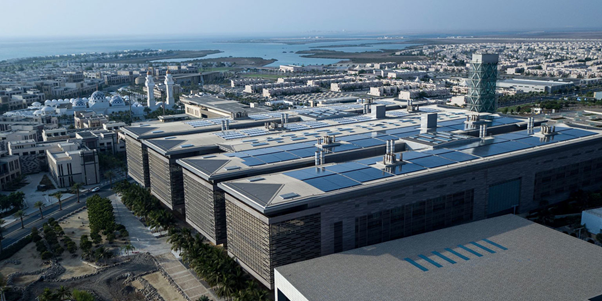Business overview
King Abdullah University of Science and Technology (KAUST) in Thuwal, Kingdom of Saudi Arabia is a post graduate and doctorate research and development university. Sustainable development is integral to KAUST’s mission to nurture innovation in science and technology and support research in areas such as energy and the environment.
The vision of KAUST is to attract and develop top talent from the Kingdom and around the world. KAUST invests in its people and it enables students to fulfil their intellectual potential in a state-of-the-art environment. The university is dedicated to maintaining the best academic and professional practices in its development and recruitment efforts.
“The University shall be a beacon for peace, hope, and reconciliation and shall serve the people of the Kingdom and benefit all the peoples of the world.” – King Abdullah bin Abdulaziz Al Saud, 1924 – 2015
Challenges
The Campus comprises 27 buildings utilising a common foundation for over 500K sqm of laboratories, classroom, administration and support facilities, including Asia’s largest super-computer – Shaheen. The entire facility is managed by a single Integrated Campus Automation System (ICAS) which monitors and/or controls about 375,000 devices from over 20 disparate sub-systems, i.e. lighting, HVAC, Access Controls, Laboratory Controls, Fire Detection and Suppression, Solar Hot-water, photovoltaics, Solar Cooling Towers, etc.
Short deadlines coupled with the expectation of excellence and LEED accreditation made managing the design and construction to meet an immovable opening date the greatest challenge.
Solution
We proposed two major strategic initiatives in order to help ensure the strict delivery timetable was met. First, implementation of our Interface, Integration Management Matrix (I2M2). Second, collaboration at the design stage with all suppliers and integrators working as one Integrated Project & Supply Team (IPT). This enabled rapid prototyping of controls and interfaces coupled with an open source solution based primarily on a BACnet protocol, but with the capability to support multiple other interface protocols.
Overall, we managed a team of about 200 engineers and technicians in development of the ICAS solution which was utilised to provide a major part of the USGBC LEED Platinum certifications.
Results & Benefits
In 2006 a team led by Saudi Aramco began the planning and building of the 36 KM2 KAUST University and Community. The ground-breaking ceremony took place in October 2007 and the first scholarships were awarded in January 2008, with KAUST officially opening on September 26th 2009.
Through the direct involvement of suppliers and integrators in the IPT – Siemens, Honeywell, Cisco, Dell along with the architects, civil and MEP construction companies together with the Campus Operations and Maintenance teams (formed when the project was started), we were able to deliver the campus to full operation within the original programme and budget.
Including the technology partners in the early stages of the project with the Architects and Civil Designers helped ensure no rework was required. The inclusion of the ICAS team in the many Factory Acceptance Tests (FATs) ensured that integration of key components of the campus were fully functional and interfaced prior to arrival on-site.
In June 2010, the innovative and sustainable architecture and construction of the KAUST campus earned a Platinum rating on the Leadership in Energy and Environmental Design (LEED) scale, produced by the U.S. Green Building Council.
View a video concerning KAUST Sustainability HERE

